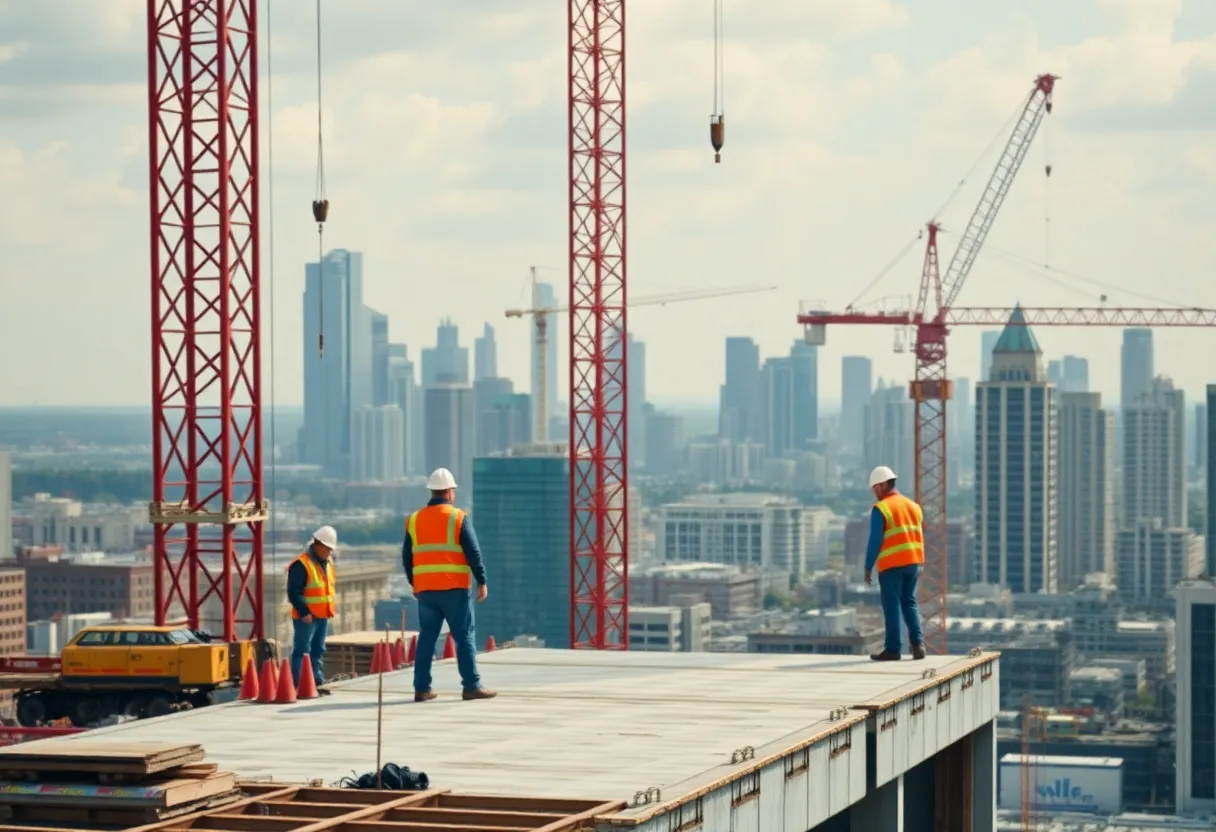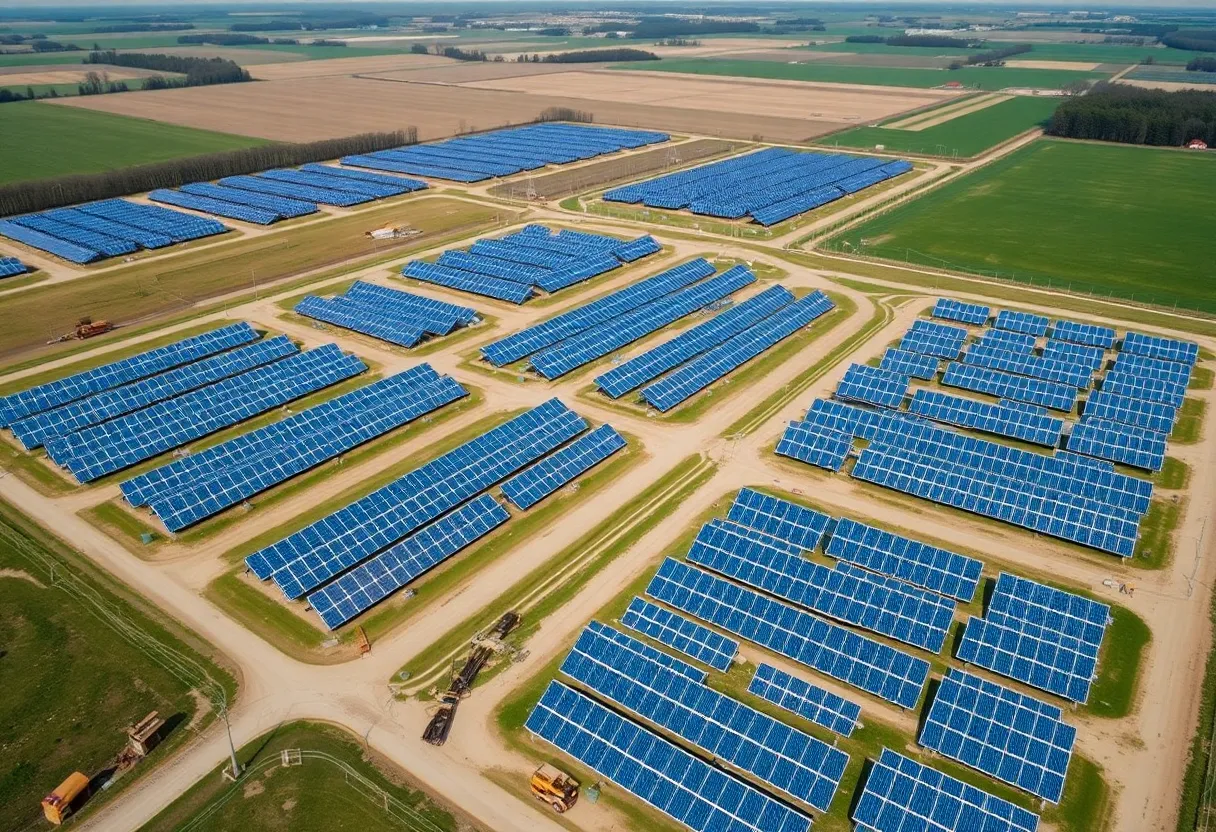News Summary
The Federal Reserve has kept its benchmark interest rate unchanged at 4.25% to 4.5%, disappointing the construction sector that hoped for a rate cut. High borrowing costs continue to challenge builders, forcing them to adapt their strategies amid criticism of Fed Chair Jerome Powell. The construction market is responding by diversifying projects and focusing on strategic planning, while inflation remains a critical concern driving up material costs. Despite expectations for future rate cuts, the current economic landscape necessitates cautious project planning and execution.
Federal Reserve Holds Interest Rates Steady, Builders Face Challenges
The Federal Reserve has opted to maintain its benchmark federal funds interest rate at a steady range of 4.25% to 4.5%. This decision, made on Wednesday, comes as a disappointment to many in the construction sector who had hoped for a rate cut that could help revive stalled projects and facilitate new developments. With high borrowing costs persisting, builders are forced to navigate a landscape fraught with financial hurdles.
Pressure on Federal Reserve Chair Amid Criticism
The decision to keep interest rates unchanged puts additional pressure on Federal Reserve Chair Jerome Powell. President Trump’s public criticism of Powell’s rate decisions has raised concerns about the stability of leadership within the Fed. Speculation has arisen regarding whether the president might attempt to dismiss Powell, although legal experts indicate that such authority is limited and would require a justifiable cause.
Compounding these leadership concerns, ongoing investigations into the costs associated with a $2.5 billion renovation of the Federal Reserve’s headquarters, which Trump visited, have surfaced. The administration is scrutinizing the situation, questioning whether there is sufficient basis for Powell’s potential dismissal.
Construction Sector Struggles with Borrowing Costs
The high interest rates have created a challenging environment for builders, particularly for those relying on traditional financing. As a result, progress on various construction projects is being hampered, causing developers to reassess their strategies. While some markets, like data centers and manufacturing, exhibit rapid growth, others are adopting a more cautious stance due to financing constraints.
Contractors are adapting by diversifying their portfolios to mitigate risks associated with slower commercial activity. A notable example is Adolfson & Peterson, which is strategically combining public and private work to balance the effects of reduced commercial projects. This approach allows them to continue operations while navigating the fluctuations in the market.
Strategies for Successful Project Execution
To stay on track, contractors are emphasizing the importance of tighter preconstruction planning and flexibility during project execution. By employing collaborative contracting strategies, they are seeking to manage project costs and timelines more effectively, which becomes crucial in a tightening market. Increased attention to public projects financed by federal infrastructure funds highlights a shift as private sector financing becomes more conservative.
Addressing Inflation and Material Costs
Inflation remains a significant challenge for the construction sector, with the consumer price index rising at an annual rate of 2.7% in June, surpassing the Federal Reserve’s targeted 2% mark. These economic pressures have had a direct impact on costs associated with construction materials, including significant increases in the price of copper wire, complicating the underwriting of new construction ventures.
Future Outlook for Construction Projects
While expectations of future rate cuts exist—potentially improving construction lending—higher interest rates continue to curtail project viability. Moving forward, some developers are choosing to plan projects based on fundamentals rather than speculative capital, adopting a cautious yet proactive approach in response to ongoing economic pressures.
Overall, contractors are prioritizing project quality over quantity, recognizing that narrowed margins from high-interest rates require a more measured approach. The construction sector is entering a phase where adaptability, strategic planning, and a focus on sustainable projects will be crucial for weathering the current economic challenges.
Deeper Dive: News & Info About This Topic
Additional Resources
- The Wall Street Journal
- CNBC
- Fortune
- Bloomberg
- CNN
- Wikipedia: Federal Reserve
- Google Search: Federal Reserve Renovation
- Google Scholar: Federal Reserve
- Encyclopedia Britannica: Federal Reserve Board
- Google News: Federal Reserve news
Author: Construction FL News
FLORIDA STAFF WRITER The FLORIDA STAFF WRITER represents the experienced team at constructionflnews.com, your go-to source for actionable local news and information in Florida and beyond. Specializing in "news you can use," we cover essential topics like product reviews for personal and business needs, local business directories, politics, real estate trends, neighborhood insights, and state news affecting the area—with deep expertise drawn from years of dedicated reporting and strong community input, including local press releases and business updates. We deliver top reporting on high-value events such as the Florida Build Expo, major infrastructure projects, and advancements in construction technology showcases. Our coverage extends to key organizations like the Associated Builders and Contractors of Florida and the Florida Home Builders Association, plus leading businesses in construction and legal services that power the local economy such as CMiC Global and Shutts & Bowen LLP. As part of the broader network, including constructioncanews.com, constructionnynews.com, and constructiontxnews.com, we provide comprehensive, credible insights into the dynamic construction landscape across multiple states.





